I’ve been wrenching on cars for years, and one thing I’ve learned is that a good oil filter can make or break your engine’s longevity. That’s why I’m sold on the NAPA ProSelect oil filter. It’s affordable, reliable, and gets the job done without breaking the bank.
Whether you’re a weekend DIYer or just want to keep your ride running smoothly, this filter’s balance of quality and cost is hard to beat. Trust me, your engine will thank you for making the switch.
My Experience With The NAPA Proselect Oil Filter
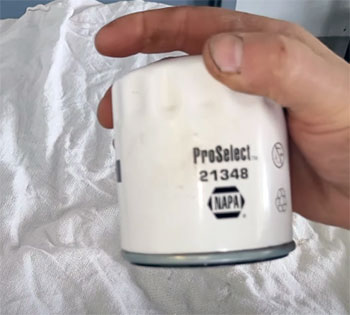
Picture this: I’m in my garage, sleeves rolled up, ready to give my 2018 Honda Civic its routine oil change. I’d been using a mix of filters over the years—some OEM, some budget brands—but this time, I grabbed a NAPA ProSelect from my local auto parts store.
It was a spur-of-the-moment choice, mostly because it was on sale for under $5, and I’d heard decent things about NAPA’s lineup. I figured, why not give it a shot?
Installing it was a breeze. The filter fit perfectly, screwing on without any fuss, and the rubber gasket felt sturdy enough to form a solid seal.
I topped off the engine with some synthetic oil, fired up the car, and listened for any weird noises—nothing but the usual purr. Over the next 5,000 miles, I kept an eye on things. No leaks, no pressure drops, no warning lights. The oil stayed surprisingly clean when I checked it at the halfway mark, which was a pleasant surprise for a filter in this price range.
I decided to cut open the ProSelect after removing it, just to see what was going on inside. The filter media looked intact, no tears or clogs, and it had trapped a decent amount of gunk—proof it was doing its job. The anti-drainback valve, made of nitrile rubber, was still pliable, though I wondered how it’d hold up in extreme cold. Overall, I was impressed.
For a budget-friendly filter, it performed like a champ, and I felt confident it was protecting my engine without any hiccups. Since then, I’ve used the ProSelect on my wife’s SUV and my old pickup, and it’s been consistently solid. It’s not perfect, but it’s a reliable workhorse for everyday driving.
Pros Of The NAPA Proselect Oil Filter
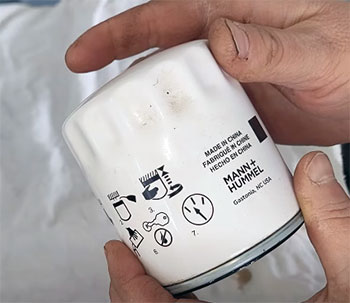
- Affordability That Doesn’t Skimp on Quality: Let’s talk money. The NAPA ProSelect is one of the most wallet-friendly filters you’ll find that still delivers solid performance. I paid about $4.50 for mine, and even at regular price, it’s usually under $7. Compare that to premium filters like Mobil 1 or K&N, which can run $12 or more, and it’s a steal. But here’s the kicker—it doesn’t feel like a cheap knockoff. The construction is sturdy, with a metal canister that can handle the pressure of a tight install. For budget-conscious folks like me, it’s a no-brainer.
- Reliable Filtration for Everyday Driving: The ProSelect’s filtration is where it shines for daily drivers. It uses a cellulose-based media that traps particles down to about 20 microns, which is plenty for most commuter cars. I noticed my oil stayed cleaner longer compared to some bargain-bin filters I’ve tried. NAPA claims a decent multi-pass efficiency, and from what I saw when I cut mine open, it was catching plenty of debris without clogging up. If you’re not racing or towing heavy loads, this filter’s got you covered.
- Easy Installation and Wide Compatibility: I can’t stress enough how much I appreciate a filter that doesn’t fight me during installation. The ProSelect’s threading is spot-on, and it fits a wide range of vehicles, from my Honda to my Ford F-150. The canister has a textured surface that gives you a good grip, so you’re not wrestling with it when your hands are oily. Plus, NAPA’s catalog makes it easy to find the right model for your car, which saves you from the headache of cross-referencing part numbers.
- Decent Durability for Standard Intervals: For a filter in this price range, the ProSelect holds up well over a standard 3,000- to 5,000-mile oil change interval. The metal end caps and spot-welded center tube feel robust, and I didn’t notice any warping or leaks after months of use. It’s not built for extreme conditions, but for city driving or highway commutes, it’s more than durable enough. I’ve run it through hot summers and chilly winters without any issues, which is all I ask from a filter at this price point.
Also read: My Thoughts on The FRAM Extra Guard Oil Filter Reviews
Cons Of The NAPA Proselect Oil Filter
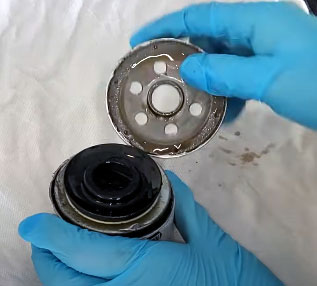
Nitrile Anti-Drainback Valve Concerns: One thing that gives me pause is the nitrile rubber anti-drainback valve. It works fine in moderate climates, but I’ve read reports of nitrile hardening in extreme cold, which could lead to oil starvation at startup. I haven’t had this issue myself, but if you live in a place where winters dip below zero, you might want to keep an eye on it. Silicone valves, like those in NAPA Gold filters, are more resistant to temperature extremes, so this is a trade-off for the lower price.
- Not Ideal for Extended Oil Change Intervals: If you’re running synthetic oil and pushing your oil changes to 7,500 miles or more, the ProSelect might not be your best bet. Its cellulose media and smaller surface area aren’t designed for long intervals. I stuck to 5,000 miles, and it was fine, but I wouldn’t trust it for much longer. Premium filters with synthetic media, like the NAPA Platinum, are better suited for extended use, so plan accordingly if you’re a low-maintenance type.
- Inconsistent Manufacturing Origins: I’ve noticed some chatter online about where ProSelect filters are made, and it’s a bit of a mixed bag. Mine was stamped “Made in Mexico,” but others have reported filters from China or elsewhere. While I didn’t see any quality issues with mine, the lack of consistency can make you wonder about quality control. It’s not a dealbreaker, but I’d prefer a clearer picture of where these filters are coming from.
- Limited Performance in High-Stress Conditions: If you’re towing, racing, or driving in dusty, rugged environments, the ProSelect might not keep up. Its filtration media isn’t as advanced as premium options, and it’s not built for heavy-duty applications. I stick to standard driving, so it’s fine for me, but if your vehicle sees intense use, you might want to upgrade to a filter with better dirt-holding capacity and higher efficiency.
Maintenance Tips For Using The NAPA Proselect Oil Filter
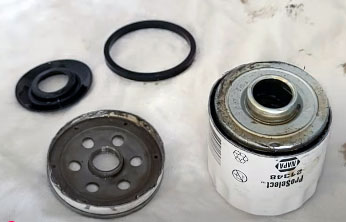
- Follow Your Vehicle’s Oil Change Schedule: Your car’s manual is your bible here. Most vehicles recommend oil changes every 3,000 to 5,000 miles for conventional oil, which aligns perfectly with the ProSelect’s capabilities. I set a reminder on my phone to check my oil every 3 months or 3,000 miles, whichever comes first. Sticking to this schedule ensures the filter doesn’t get overwhelmed and keeps your engine happy.
- Pre-Fill the Filter Before Installation: One trick I swear by is pre-filling the filter with fresh oil before screwing it on. It takes an extra minute, but it reduces the time it takes for oil to reach your engine at startup, minimizing wear. Just pour in about two-thirds of the filter’s capacity, let it soak into the media, and you’re good to go. Be careful not to spill, though—oil on the gasket can make it slippery.
- Lubricate the Gasket for a Tight Seal: Always rub a thin layer of clean oil on the filter’s rubber gasket before installation. I use my finger to smear a bit of the new oil around the rim. This helps the filter screw on smoothly and prevents the gasket from sticking or tearing when you remove it later. It’s a small step, but it’s saved me from countless headaches.
- Use the Right Tools for Removal: Removing an old filter can be a pain if it’s stuck. I keep a strap wrench handy for those stubborn moments—it gives you enough leverage without damaging the canister. If you’re in a pinch, a clean rag and some elbow grease can work, but avoid using screwdrivers or other sharp tools that could puncture the filter and make a mess.
- Inspect the Filter After Removal: Once you’ve swapped out the ProSelect, take a moment to inspect the old one. Look for leaks, dents, or signs of clogging. I like to cut mine open with a filter cutter to check the media’s condition—it’s a geeky habit, but it tells you how well the filter held up. If the media is torn or brittle, you might need to shorten your oil change interval or switch to a higher-end filter.
- Store Filters Properly to Avoid Damage: If you’re stocking up on ProSelect filters during a sale, store them in a dry, cool place. I keep mine in a plastic bin in my garage to protect them from moisture and dust. A damaged filter can let contaminants sneak through, so don’t toss them in a corner where they might get crushed or exposed to the elements.
Comparison With Other Oil Filter Brands
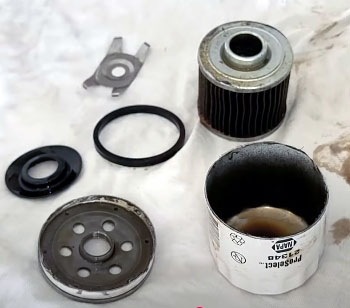
- Purolator Classic: I’ve used Purolator Classic filters on and off, and they’re a close competitor to the ProSelect. They’re similarly priced, often around $5 to $7, and offer decent filtration for standard driving. The Classic uses a cellulose media like the ProSelect, but I’ve found its anti-drainback valve to be a bit more reliable in cold weather, possibly due to better material quality. However, Purolator’s construction feels slightly less robust—the canister is thinner, and I’ve had one dent during installation. If you’re choosing between the two, the ProSelect edges out for its sturdier build, but Purolator’s a solid alternative if you prioritize cold-weather performance.
- Fram Extra Guard: Fram’s Extra Guard is another budget option I’ve tried, and it’s a mixed bag. It’s dirt cheap, sometimes under $4, and fits well, but the quality leaves something to be desired. The filter media feels flimsier, and I’ve seen reports of tears in high-mileage scenarios. The ProSelect’s metal end caps and welded center tube give it a clear advantage in durability. Fram’s cardboard end caps, by contrast, can degrade over time. If you’re on a tight budget, Fram might tempt you, but I’d spend the extra buck for the ProSelect’s peace of mind.
- NAPA Gold: Since NAPA makes both the ProSelect and Gold filters, it’s natural to compare them. The Gold is a step up, priced around $8 to $10, and it shows. It uses a blended media with better dirt-holding capacity and a silicone anti-drainback valve that’s more durable in extreme temperatures. I’ve used the Gold on my pickup for longer intervals, and it’s held up beautifully. That said, the ProSelect is perfectly fine for shorter intervals and milder conditions. If your budget allows, the Gold is worth the splurge, but the ProSelect doesn’t feel like a compromise for everyday use.
- Mobil 1: Mobil 1 filters are the premium choice, often costing $12 or more, and they’re built for high-performance driving. Their synthetic media traps smaller particles, down to 10 microns, and they’re designed for extended intervals with synthetic oil. I tried one on my Civic during a phase when I was experimenting with long oil changes, and it was impressive—super clean oil even at 7,000 miles. But for regular driving, the ProSelect’s filtration is adequate, and I can’t justify the Mobil 1’s price for my commute. If you’re a performance enthusiast, Mobil 1 is king, but the ProSelect is more practical for most of us.
- WIX: WIX filters, which actually manufacture NAPA’s filters, are another strong contender. Priced around $7 to $9, they’re similar to the NAPA Gold in quality, with a glass-enhanced cellulose media and silicone anti-drainback valve. I’ve used WIX on my wife’s SUV, and it’s a workhorse, especially for slightly longer intervals. The ProSelect, being WIX’s budget line (equivalent to their Pro-Tec), sacrifices some media quality and valve durability to hit a lower price point. WIX is a great middle ground if you want better performance than the ProSelect without going full premium.
Read More: My Thoughts on Olympic Elite Stain And Sealant Reviews.
Frequently Asked Questions (FAQ)
NAPA’s oil filters, including the ProSelect, are solid choices for most drivers. The ProSelect offers reliable filtration and durability for standard oil change intervals, making it a great value for daily commuters. Higher-end options like the NAPA Gold and Platinum step up the game with better media and valves for tougher conditions or longer intervals. Based on my experience and user feedback, NAPA filters are well-regarded for their quality, especially considering their price range.
The “best” oil filter depends on your needs. For everyday driving, the NAPA ProSelect or Purolator Classic are excellent budget picks, balancing cost and performance. For premium performance, Mobil 1 and NAPA Platinum stand out with synthetic media and high efficiency for extended intervals or high-stress driving. I lean toward the ProSelect for its affordability and reliability in standard conditions, but if you’re pushing your engine hard, a premium filter like Mobil 1 might be worth the investment.
Protec oil filters are made by WIX Filters, a well-known manufacturer in the automotive industry. WIX also produces NAPA’s ProSelect line, which is essentially their budget-tier filter, equivalent to the Protec brand. This connection explains the ProSelect’s solid construction and performance, as WIX has a reputation for quality. Knowing WIX is behind the ProSelect gave me confidence in using it, though the Protec line is designed to be more cost-effective than WIX’s premium offerings.
Some NAPA Gold oil filters are made in China, but manufacturing locations can vary, including Mexico and the USA, depending on the model and batch. I’ve seen reports of quality remaining consistent regardless of origin, and my Gold filters have performed well despite being made abroad. However, inconsistent manufacturing origins can raise questions about quality control, so it’s worth checking the filter’s stamp if it matters to you. There’s no definitive evidence that Chinese-made Gold filters are inferior, but it’s a detail to keep in mind.
Final Thoughts
After months of using the NAPA ProSelect, I’m convinced it’s a smart buy for anyone who wants a reliable oil filter without spending a fortune. It’s not flashy, but it gets the job done, keeping your engine clean and protected for everyday driving. Pair it with regular maintenance, and you’ve got a recipe for a long-lasting vehicle. Grab one next time you’re at NAPA—you won’t regret it.
